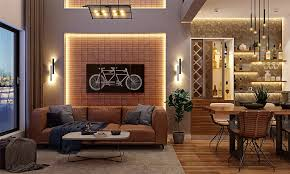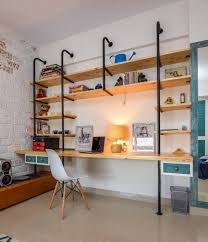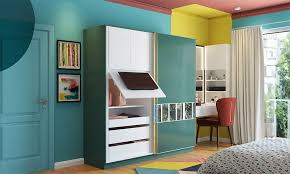Living in a compact home doesn’t mean you need to compromise on comfort, organization, or aesthetic appeal. With the right design choices, even the tiniest rooms can be transformed into welcoming, multi-functional, and visually pleasing spaces. In this blog post, we will share practical, stylish, and space-efficient ideas focused on Maximizing Small Spaces in your home or apartment.
1. Embrace Multi-Functional Furniture
Multi-functional furniture is a game-changer when it comes to Maximizing Small Spaces. Look for items that serve more than one purpose. For example, a sofa bed can function as a couch during the day and transform into a bed at night. Coffee tables with storage compartments, folding desks, and nesting side tables are other great additions.
These pieces save valuable space while increasing functionality, making your home more adaptable without adding clutter.

2. Vertical Space is Valuable Real Estate
When horizontal space is limited, vertical space becomes your best friend. Use tall bookshelves, wall-mounted cabinets, and hanging organizers to make the most of your walls. Ceiling-mounted racks in the kitchen, pegboards for tools or accessories, and hanging planters can help clear floor space.
By utilizing vertical storage, you’re not only Maximizing Small Spaces but also keeping essentials easily accessible and your home looking organized.

3. Choose Light Colors and Mirrors
Color and light can significantly impact how large or small a space feels. Light shades like white, beige, pale grey, and soft pastels reflect more light and help open up a room. Similarly, mirrors create the illusion of depth and make spaces feel brighter and more expansive.
Using a combination of light wall colors and strategically placed mirrors is a timeless and effective strategy for Maximizing Small Spaces without any major renovation.
4. Keep Your Layout Minimal and Intentional
Clutter can quickly take over a small space, making it feel cramped and uncomfortable. Opt for a minimalistic layout that emphasizes open floor areas and clean lines. Limit the number of decorative items and only keep furniture that serves a clear purpose.
A simplified space not only looks better but is also easier to clean and maintain. This is key when Maximizing Small Spaces and creating a peaceful, stress-free environment.
5. Use Smart Lighting Techniques
Proper lighting can visually enlarge a room. Combine different lighting sources—ambient, task, and accent lighting—to eliminate shadows and highlight focal points. Floor lamps, under-cabinet lighting, and sconces work well in tight spots.
Smart lighting is particularly useful in rooms with limited natural light. When strategically placed, lighting can enhance your space’s functionality and aesthetic, helping with Maximizing Small Spaces in a subtle yet impactful way.
6. Invest in Built-In Furniture
Built-in units are perfect for tailoring furniture to fit your specific space. Wall-mounted desks, built-in wardrobes, or Murphy beds blend seamlessly into your room’s design while offering storage and functionality.
These custom solutions often cost more upfront but offer long-term benefits for Maximizing Small Spaces, especially in homes where every square inch matters.

7. Make Use of Hidden and Under-Used Storage Areas
Storage doesn’t have to be obvious. Look for creative storage opportunities under beds, behind doors, or inside ottomans and benches. Add drawer organizers, stackable bins, and hanging storage inside closets to increase capacity.
By turning overlooked areas into functional storage zones, you are effectively Maximizing Small Spaces and keeping clutter at bay.
8. Define Zones Within a Single Room
In studio apartments or open layouts, defining specific areas for sleeping, dining, and working makes a space feel larger and more organized. You can use rugs, curtains, lighting, or furniture placement to create these zones.
Zoning helps give purpose to every area, which is a powerful tool for Maximizing Small Spaces without building physical partitions.
9. Opt for Sliding Doors or Open Shelving
Traditional swinging doors require clearance space, which can be inconvenient in small rooms. Sliding doors, pocket doors, or curtains are more efficient alternatives. Similarly, replacing closed cabinets with open shelving can make a room feel more spacious and inviting.
These small changes go a long way toward Maximizing Small Spaces and giving your home a modern, airy feel.
10. Choose Decor That Adds Function
When choosing decorative elements, look for pieces that also serve a practical purpose. For example, a wall clock, decorative basket, or stylish storage box not only looks good but also adds value by offering utility.
Decor should enhance your living experience—not take up space unnecessarily. Functional decor is a smart way to focus on Maximizing Small Spaces without sacrificing style.
Designing a small home doesn’t have to be a challenge. With creativity, intentional choices, and the right furniture and layout strategies, you can transform even the most limited areas into beautiful, functional, and comfortable living spaces. Whether you live in a compact apartment or a small house, these tips for Maximizing Small Spaces will help you live smarter and more stylishly.
